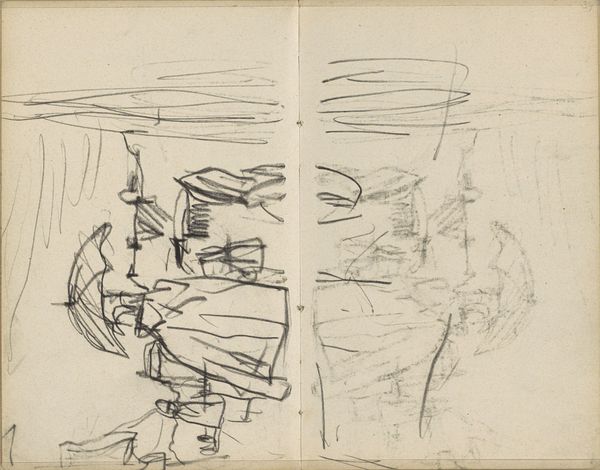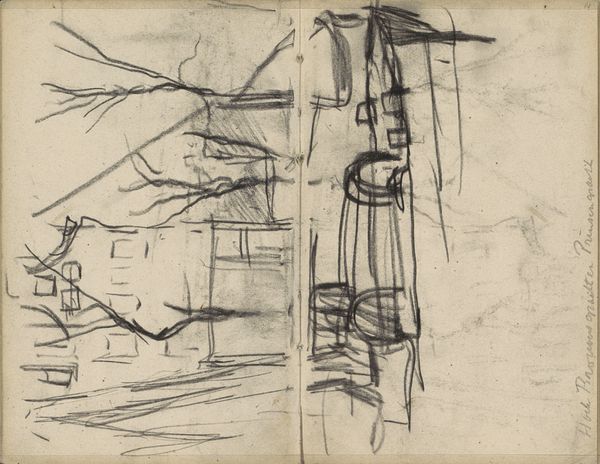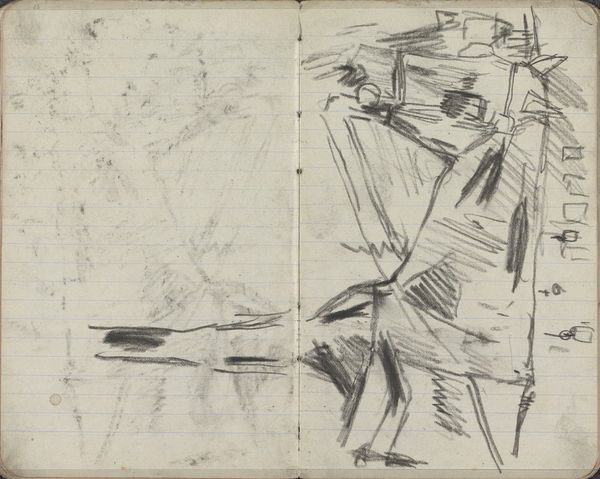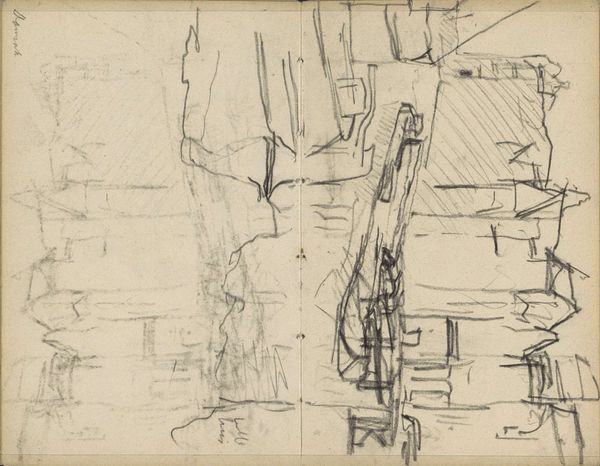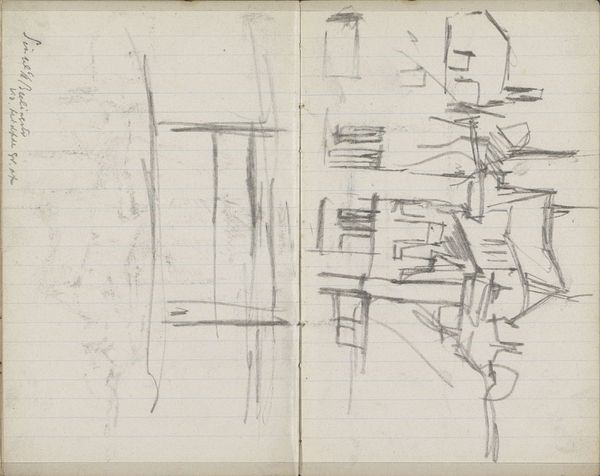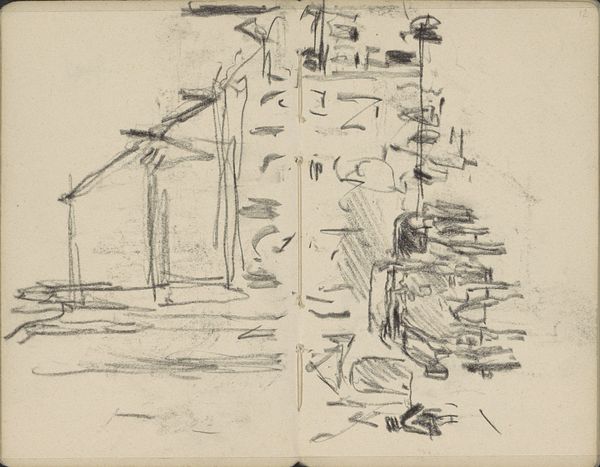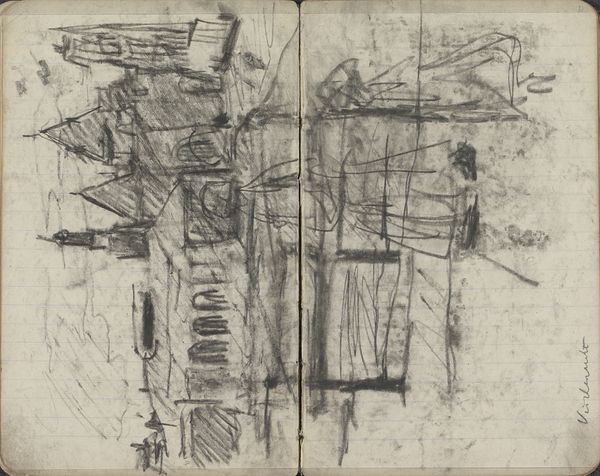
Gezicht op de hoek van de Paleisstraat en de Nieuwezijds Voorburgwal te Amsterdam 1896 - 1901
0:00
0:00
georgehendrikbreitner
Rijksmuseum
Copyright: Rijks Museum: Open Domain
Curator: Looking at "Gezicht op de hoek van de Paleisstraat en de Nieuwezijds Voorburgwal te Amsterdam," a pencil and graphite drawing by George Hendrik Breitner, likely created between 1896 and 1901, currently residing at the Rijksmuseum, my immediate reaction is... sketchiness! It's raw, unfinished, a fleeting impression captured in graphite. Editor: Absolutely. It lacks the polish we often associate with established artwork, almost like a diary entry of sorts. I wonder how this quick depiction relates to the urban experience in Amsterdam at the turn of the century? Consider the social tensions brewing at that time – the rise of industry and shifting class structures – and then ask yourself how does Breitner reflect on those challenges in his art. Curator: Well, there’s a certain ambiguity there, right? It *is* a cityscape. But the buildings aren’t romanticized. There’s a grit, an anonymity. One almost has a sense that even the sun would have some difficulty breaking through the environment depicted in his urban scenery! I like your analogy of the diary; it feels almost clandestine! And I can’t help but wonder if his chosen tools–pencil and graphite–mirrored something much larger than his artistry: were materials more difficult to acquire in some respect? Editor: Good question. I think it’s significant he chose to render the urban landscape using such "humble" materials as you say, rather than oil or some other more 'elevated' medium. How might that decision implicitly critique the structures of power represented by those towering, vaguely rendered, buildings in the piece? And notice the repetitive diagonal shading. I wonder, how might we analyze that technique through the lens of labor, maybe? Does that gesture invoke the mechanical precision required for the growing population's increased workload and demand? Curator: It's like the sketch itself is mimicking the anxieties of the industrial era. You know, Breitner positioned himself as the 'people's artist' documenting the daily lives of ordinary folk. So that reading of labor lines is apt, certainly, for what he might've been interested in capturing at the time, whether subconsciously or overtly. He wanted to depict the real, unvarnished Amsterdam, remember? Editor: Indeed, he resisted idealized portrayals, but perhaps by showing us these glimpses of everyday life, the common individual would have the opportunity to see his world—to see *themselves*— reflected with authenticity. He offers insight, doesn’t he? Curator: Right! Breitner gives visibility and, in that way, this drawing gains another, larger relevance. It's just, what stories do you want to see, to keep on re-telling and repeating and keeping relevant? Editor: Exactly. He chose this corner of Amsterdam and, with it, also set the foundation to question broader perspectives.
Comments
No comments
Be the first to comment and join the conversation on the ultimate creative platform.
